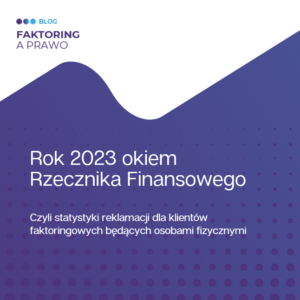(1) Introduction
On 7/12/2023. The GIIF published a new National Money Laundering and Terrorist Financing Risk Assessment (2023). Let the scale of the document's importance be evidenced by the fact that the previous one dates back to 2019, and therefore before the COVID period.
(2) Documents
Documents can be found here. The set includes:
- NATIONAL RISK ASSESSMENT OF MONEY LAUNDERING AND TERRORIST FINANCING
- APPENDIX No. 1 Methodology for conducting a national risk assessment of money laundering and terrorist financing
- APPENDIX NO. 2 Money laundering and terrorist financing risk analysis by sector
- APPENDIX No. 3 Analysis of above-threshold transactions (above EUR 15,000), made in 2020 - 2022
(3) Importance of documents / legal basis
The legal basis for the National Assessment is well-established in the AML Law (Chapter 4. National Money Laundering and Terrorist Financing Risk Assessment and Risk Assessment of Obligated Institutions) - Articles 25 - 32.
What is the significance of this for obligated institutions? According to Article 27 of the AML Law:
- Mandatory institutions identify and assess the money laundering and terrorist financing risks relating to their activities, taking into account risk factors relating to customers, countries or geographic areas, products, services, transactions or their delivery channels. These measures are proportionate to the nature and size of the obligated institution.
- In assessing the risk, obliged institutions may take into account the applicable national risk assessment, as well as the report of the European Commission referred to in Article 6(1)-(3) of Directive 2015/849.
- The risk assessments referred to in paragraph 1 shall be prepared by the obligated institutions in paper or electronic form and updated as necessary, but at least every 2 years, in particular in connection with changes in risk factors relating to customers, countries or geographic areas, products, services, transactions or their delivery channels, or the documents referred to in paragraph 2.
(4) What about factoring?
So the question remains, will we find something in the National Risk Assessment that deals strictly with factoring? Will we find something suitable for use in updating our own AML documentation? There is not much material but it is worth citing.
- National Risk Assessment
A factoring agreement is commonly used form of settling claims for goods or services rendered and financing transactions. It belongs to the type of unnamed contracts, i.e. not regulated by positive law. It is a bilateral contract between the factor and the factor. For its conclusion, the presence of a third party - the debtor - is necessary. The subject of the factoring agreement is the purchase by the factor of receivables (usually short-term) owed to the factor by the debtor, together with a commitment to provide certain services, in exchange for the transfer of receivables, the acquisition of certain services and the payment of commissions and interest.
Example
The General Inspector of Financial Information received 2 notifications from various obligated institutions regarding a company conducting business in the wholesale of other household goods. In the course of analyzing the information received, checks were made relating to the indicated company - checks in the GIIF databases - and data on additional 3 bank accounts maintained for the above-mentioned company were obtained. In connection with the acquisition of additional information, banks maintaining bank accounts for the company were requested to provide the history of accounts of the present company. At the same time, Internet searches were made for information on the subject (analysis of the company's website, which advertised itself on its own domain as a direct importer of products from China and Indonesia). Suspicions in the case in question were aroused by: the pattern of transactions carried out, transfers between companies, the amounts of transfers made (so-called 'round' transaction amounts) and identified personal and capital ties. The analysis of the case revealed that the company, within the framework of a contract concluded with a factoring company for reverse factoring184, settled obligations with six counterparties (related parties: personal, transactional and capital), who, upon receipt of funds (usually on the day of receipt), ordered transfers to the company in question, under the title of "return of advance" or "return of deposit." At the same time, the company transferred a significant portion of the money thus obtained to the entity (financial intermediary/online exchange office). Analysis of the data indicated that there were no transactions confirming the import of goods from Asia, and the submitted invoices, on the basis of which payments were settled, raised doubts about their reliability. In addition, some of the company's counterparties remained of interest to one of the Prosecutor's Offices in connection with pending proceedings for the act 271a § 1 of the Penal Code (intellectual falsification of a document in the form of an invoice). After collecting materials in the case in question, a few weeks after receiving notifications from mandatory institutions, the GIIF forwarded the notification to the locally competent prosecutor's office, which was then sent to the prosecutor's office overseeing the proceedings conducted against, among others, the financial intermediary/online exchange.
Table No. 21 - Typologies by category for the years: 2020 - 2022
| Name of typology | Number of cases realized 2022. |
General number matters REAL. w 2022 r. |
% matters Realization. w 2022 r. |
Number matters realized nych 2021. |
Total number REAL Cases. 2021. |
% issues implement.in 2021 r. |
Number of cases realized 2020. |
General number REAL Cases. 2020. |
Percentage matters implement.in 2020 r. |
| factoring | 0 | 443 | 0,0% | 0 | 526 | 0,0% | 0 | 540 | 0,0% |
- APPENDIX NO. 2 Money laundering and terrorist financing risk analysis by sector
Table 19
| Type of services used, financial products |
Factoring |
| General description of the risk | Use of factoring to legitimize funds coming from from illegal sources |
| The risk scenario (i.e. possible example of occurrence risks) |
A company operating on the Polish market (factor) entered into a factoring agreement with 2 foreign entities (factors) under which it paid for the purchased goods. The funds credited to the accounts of the Polish company came from, among other things, cash payments made in cash deposit machines by foreigners. The Polish company used in the crime was purchased by the foreigner as a so-called 'ready-made' company, in order to make it difficult for law enforcement authorities to find the persons actually directing the procedure. |
| Vulnerability level | 2 |
| Justification for the level vulnerabilities |
Factoring services in the form of redemption by the service provider Factoring of companies' outstanding receivables owed to them by their trade counterparties is used in the financial market. It is rather difficult to hide the identity of the principal of transactions in this market. There may be transactions of an international nature between the factor and factors. The company using the factoring service faster receives the funds resulting from the transaction. All entities offering these services are IOs. Entities operating in this area have some awareness of their PPP/PFT obligations. Public authorities have knowledge of PP/FT risks in this area. The GIIF has the ability to collect and analyze information. There is a high probability that a case of money laundering in the scope of the analyzed scenarios will be detected, followed by the prosecution and conviction of the perpetrators as a result of the investigation/investigation. National and international cooperation between public administrations is at a relatively good level. Existing legislation largely corresponds to the scope of the risk analyzed. |
| Threat level | 2 |
54
| Justification for the level threats |
Factoring is a service provided by a factor, which involves buying invoices from an entity that is a supplier of goods or performer of services to its counterparties. Criminals can use a legitimate factoring company (which is controlled by them) to legitimize funds from illegal sources. The indicated method of money laundering is a method of money laundering that is not very attractive to criminals. There is information about the use of this type of activity to commit base crimes for money laundering. CONCLUSION: The use of factoring to legitimize funds from illegal sources poses a medium risk for money laundering |
Factoring service providers should pay particular attention to verifying the The source of the asset values, which in the case of the factoring service should include verification of the basis for invoices issued by the client of the obligated institution. Ongoing monitoring of economic relations and source verification property values, may also include an analysis of economic relations between The customer and its contractors.
Due to the nature of the activities carried out by mandatory institutions from the sector of other financial institutions, it is crucial to obtain knowledge about the nature of the relationship economic activities carried out by customers, as well as the source of value Assets at the disposal of the client.
(5) Actions to be taken
Considering the legal basis for the National Assessment, particularly the wording of Article 27 of the AML Law, currently obliged institutions should consider the impact of the National Assessment on their procedures for identifying and assessing risks related to money laundering and terrorist financing as they relate to their operations, taking into account risk factors relating to customers, countries or geographic areas, products, services, transactions or their delivery channels addressed in the National Risk Assessment. Simplifying - they should consider the need to update AML compliance procedures. In this regard The law firm provides assistance.







